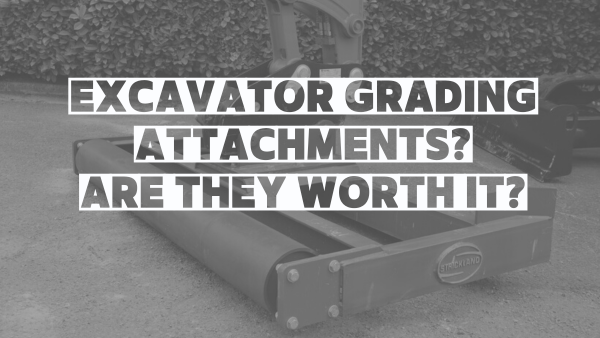Grading Attachments for Excavators: Are They Even Worth IT?
If you are looking to supercharge the way you operate an excavator, there is no doubt you will want to consider using a grading tool for it. Excavator attachments are extremely popular across all parts of the industry. Hence why it’s important to figure out what’s worth your investment. In this resource, we will share with you all the knowledge we have about grading attachments for excavators and when might be the right time to consider them.
Grading attachments for excavators replace the conventional bucket that is attached to the arm of the excavator. It is very common to find excavator attachments to fit every single-sized digger in the market. Therefore, if this is something you are considering, you are spoilt for choice. Nevertheless, let us guide you through the maze and introduce you to what’s out there and why it may support you in your project.
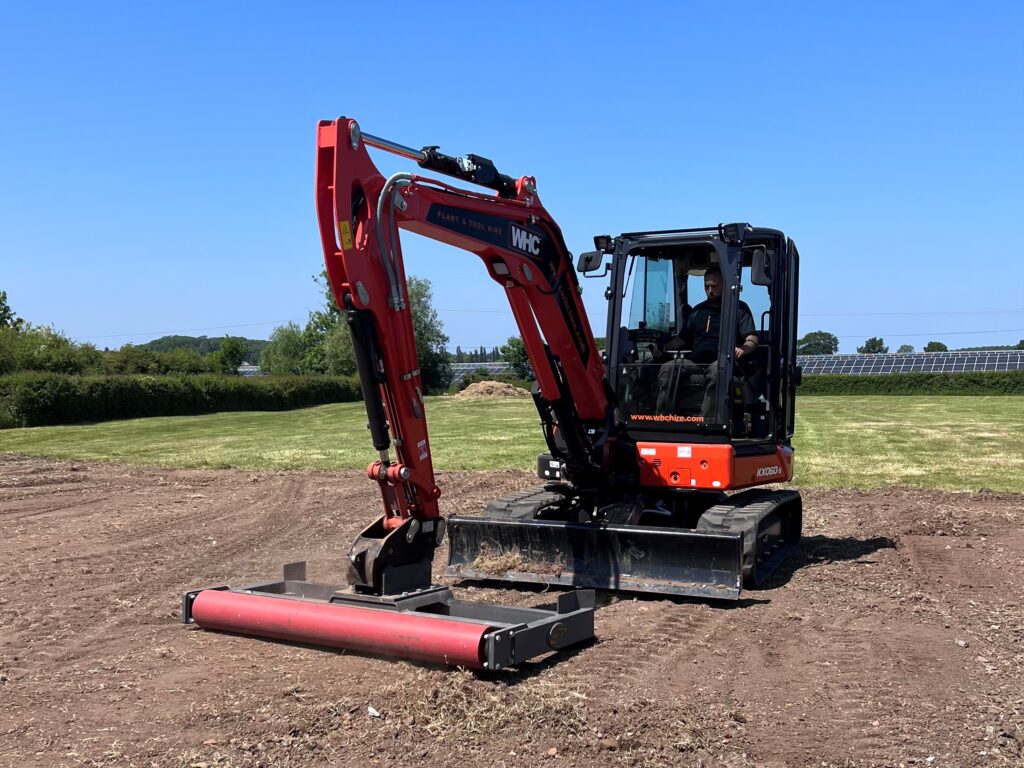
What is Grading?
Put simply, grading is the process of reshaping land to a new topography. (The arrangement of the natural and artificial physical features of an area). This process can require the raising or lowering of ground levels to reach a specific gradient, level or fall. Generally, there are 2 main reasons why we choose to grade an area. These are to:
To Create Proper Drainage
Grading is used to create a steady fall away from construction such as houses and other buildings. By grading, you can channel where you want runoff water to go. Ultimately, calving the landscape to suit your project. Drainage is essential to any type of construction project, and grading is the key to successful drainage.
Preparing the Ground for Load Bearing
Another common reason for using the process of grading is to prepare the ground for load bearing. This could be for any type of structure, roads, buildings etc. Grading is used in the preparation, levelling, and compaction stages to secure the foundations of a build. During these stages, a large amount of material can be added to meet a desired height and compaction rate. The process of grading allows and ensures an even spread of materials across a build. In turn, provides the required result.
Apart from both main two reasons, grading can place in any project depending on its own requirements. However, to help further, construction grading can normally come under one of these six types of land grading.
6 Common Type of Land Grading
There are commonly 6 types of land grading that you will find in construction. Understanding the difference between each of these types of tasks can aid in your decision of investment:
Re-grading
Re-grading is the process of altering various highest of a landscape. This can involve the removal and addition of the earth to achieve the desired level. This process is ideal for water runoff or in building construction to ensure all foundations are at the same depth and level.
Landscape Grading
Landscape grading is the process of shaping grounds to prepare for things such as grass areas, planters, water features etc. This often requires the addition of fresh topsoil, channelling drainage and sloping to compensate for rainfall. Landscape grading can also be used to achieve a particular aesthetic finish.
Architectural Grading
Architectural grading speaks very much for itself. This process is specific for the construction of buildings. This includes tasks such as levelling a building site, digging footings, and removing unwanted elevations.
Rough Grading
This process is normally the first stage of any project and requires the heaviest machinery possible. It requires a large amount of earthmoving to establish a rough design of what you are trying to achieve. It is worth noting you should have a plan for your grade prior to commencing work.
Finished Grading
Unlike rough grading, this process carves out any shape in the elevation you are working with. This could be some of the features we have already touched on in landscape grading, as well as the addition of a hardcore level to construct from. Further, during this grading process, rough materials, boulders and waste are removed from the earth.
Final Grade
A final grade is a term commonly used in the very last stages of earthmoving. Usually, this is only used in landscaping prior to grass seed being added. This stage may require the addition of imported topsoil and requires very little amount of compaction, unlike its sub-layers.
The Common Method Of Grading With An Excavator
Choosing to grade with an excavator is a wise choice where access permits. Grading by hand can take hours, days or even weeks, depending on your project size. It is essential that before you think about grading, you get the correct excavator to help you. If you are looking for the right size excavator, you should check out this other resource before continuing.
The most common method of grading with an excavator is with a grading bucket. Grading buckets are designed differently from other excavator attachments on the market. They consist of a wide shallow bucket with a straight edge.

These features allow them to be very useful when coming to creating gradients, pushing topsoil around and ground levelling. Grading buckets are not suitable for digging. Choosing to use a grading bucket for digging could stress your excavator or even ultimately damage the bucket. It’s best to stick to the lighter stuff. Besides these common types of grading buckets, there are now other excavator tools to speed up grading processes.
Types Of Grading Attachments For Excavators
With the continuous innovation in the construction industry, has come a range of new excavator attachments to improve productivity. These excavator attachmentscan assist in your performance of an excavator. Resulting in work being completed faster, safer and more efficiently. Let’s have a closer look at these excavator grading tools that can help.
Tilting Grading Bucket
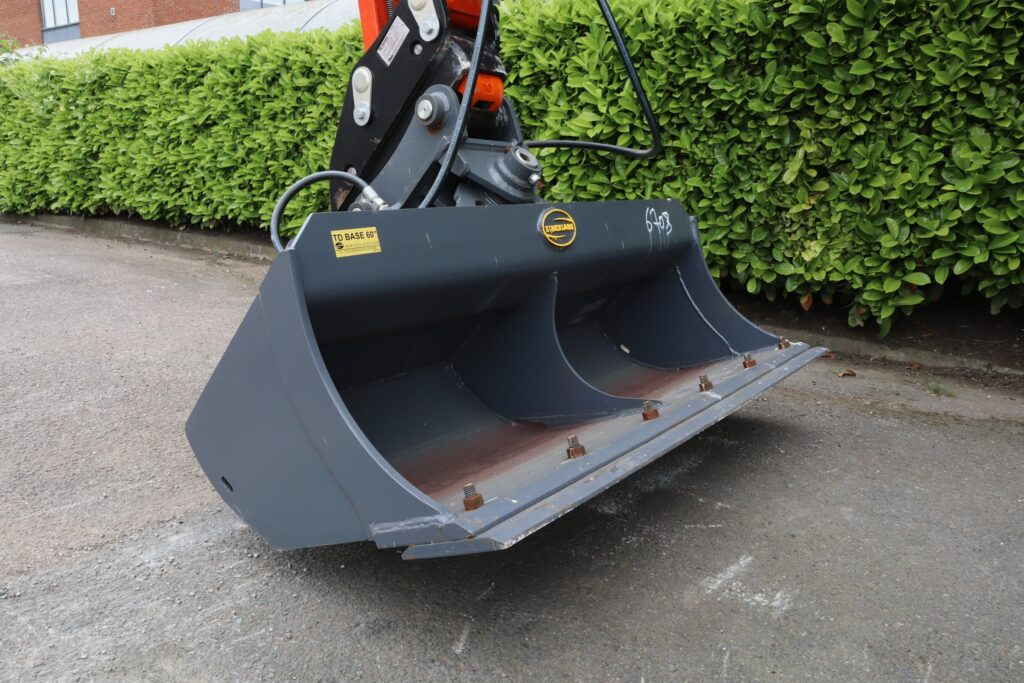
Tilting grading buckets are certainly the new craze. Why? Well, these excavator grading tools have allowed operators to grade trenches and slopes on an angle without having to reposition the excavator. In turn, saving operators a huge amount of time. Remember… time is money in the construction industry.
These highly efficient attachments allow an operator to adjust the angle of the bucket through 90 degrees. (45 degrees each way). The bucket itself mimics the design of a standard grading bucket. It offers a wide, shallow design with a flat edge to assist in all types of grading tasks.
Unlike a standard grading bucket, these make use of your excavator’s hydraulic auxiliary output system. The aux hoses from the tilting bucket are directly connected to the output valves found on an excavator’s arm. Once connected, the bucket can be controlled at your fingertips from the cabin.
These types of buckets are ideal for complex ground shaping in landscaping and construction.
Excavator Grading Beam
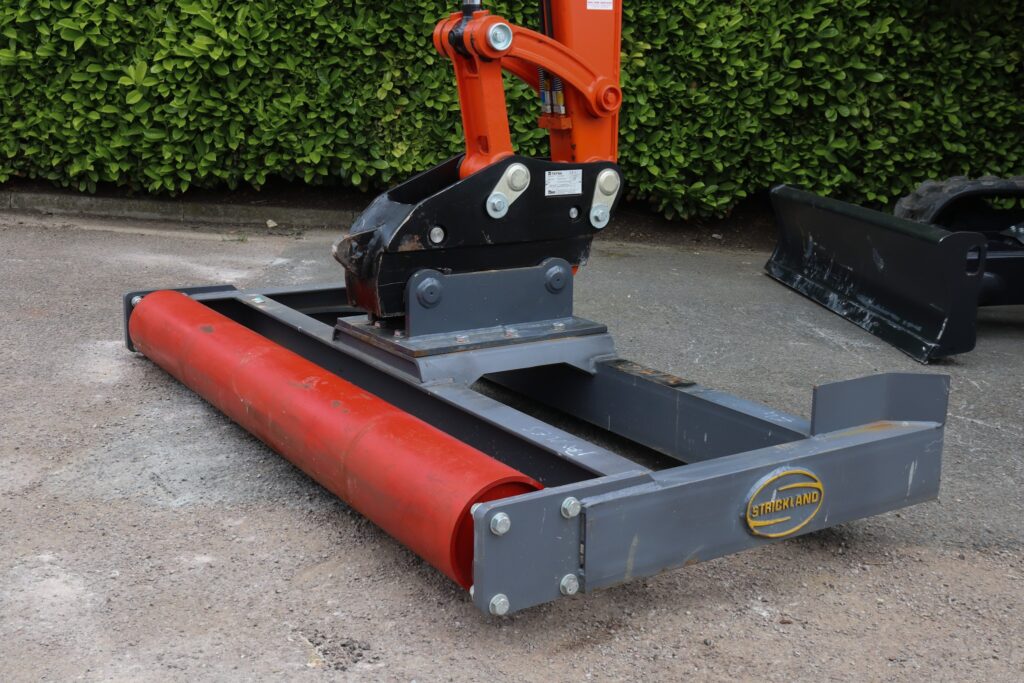
Another highly productive excavator grading attachment is the grading beam. As you can tell, these attachments are completely different from any type of bucket. They have no earth-lifting capabilities but certainly make up for it in other ways. What makes these attachments so popular is their ability to grade large areas at one time. Unlike a bucket, which may span up to 60 inches, these beams can cover more than 2m in width at a time. More coverage equals a more efficient working method.
These grading beams are designed to push and pull earth and imported materials around and grade them at the same time. Not only this, but they can be used on the existing ground to assist in the finishing and final grade. Some grading beams like the photo displayed above, come with a roller attached to the rear. This can be used at the same time during passes to compact levelled areas during passes.
Grading beams do not require the use of the hydraulic auxiliary output system on an excavator. Their design is very simple and robust. It is not uncommon for operators who use these beams regularly to invest in a swivel mount for them. These are generally built into the coupler of the attachment and require connecting the machine’s auxiliary output. Nevertheless, a standard grading beam can elevate productively massively compared to a grading bucket.
Pros and Cons Of Grading Attachments For Excavators
If you are considering hiring or purchasing a grading tool for an excavator, then it is essential that you weigh up the pros and cons. With over 25 years of experience in the industry, WHC Hire has seen the benefits and mistakes that clients have made with these attachments.
The Pros Of Grading Attachments For Excavators
– Higher levels of productivity
– Task-specific equipment
– More accuracy
– Safer as operators have more control
– Plenty of options available to suit budgets
The Cons Of Grading Attachments For Excavators
– Additional cost
– Their versatility has limits
– Take time to master operating if not used before
– Downtime costs if purchasing
Best Grading Attachments For Excavators To Use On Topsoil
There are a wide range of different excavator attachments to use on topsoil depending on the outcome you wish to achieve. If you wish to distribute and shape topsoil in different areas, you will want to choose a bucket-style attachment. For the best shaping capabilities, a tilting bucket will offer the most efficiency. With a bucket like this, you can easily add and grade all different angles of landscapes.
However, if you are looking to add a top dressing of topsoil for a final grade, use a grading beam. Grading beams are ideal to pull topsoil from piles and quickly level them out. You can be extremely delicate without disturbing the previous subbase levels you have already prepared.
Best Grading Attachment To Use With Type 1 MOT

Moving aggregate like type 1 mot with an excavator can be a timely chore. That’s why choosing the correct grading attachment for a task like this is extremely important. Using a grading bucket to distribute type 1 MOT can be a very quick and easy way of moving the aggregate about. However, to grade a material like this you are best using a grading beam. Grading beams allow you to drag aggregate and compress it at the same time. Leaving you with a firm, level base to work from.
Grading beams can be used for a wide range of different aggregates as well as type 1 MOT. Remember that choosing the correct grading attachment will be project and task-specific.
Where To Find The Right Grading Attachment For An Excavator?
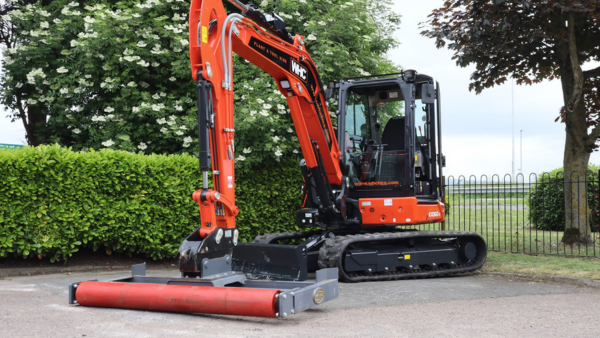
WHC Hire Services has been providing its clients and the general public with excavators and innovative attachments for over 25 years. With one of the most up-to-date fleets of equipment in the UK, WHC prides itself on offering world-class equipment at competitive rates for all. Find the ideal excavator and grading attachment from our wide range of equipment available. To discover more of what we have to offer, click here to see our online catalogue. Or call 01684377977 today to speak to one of our friendly team.

